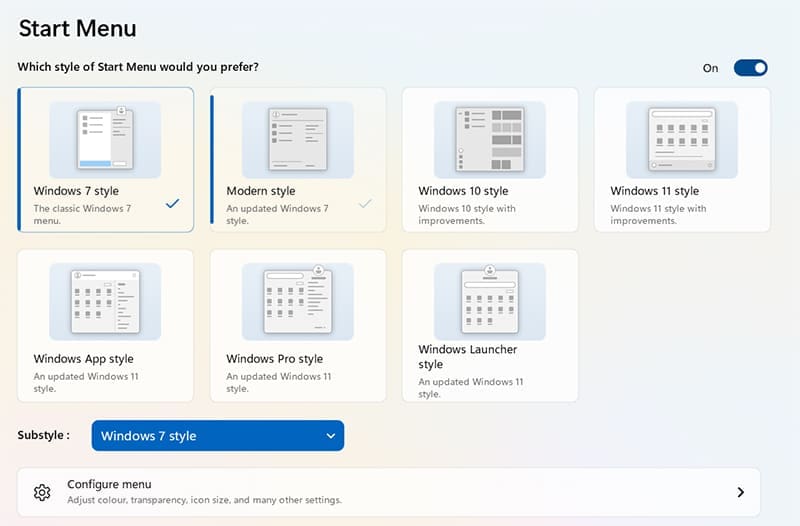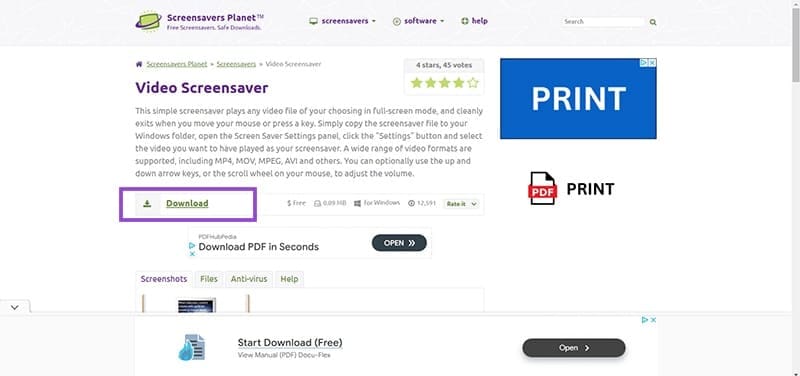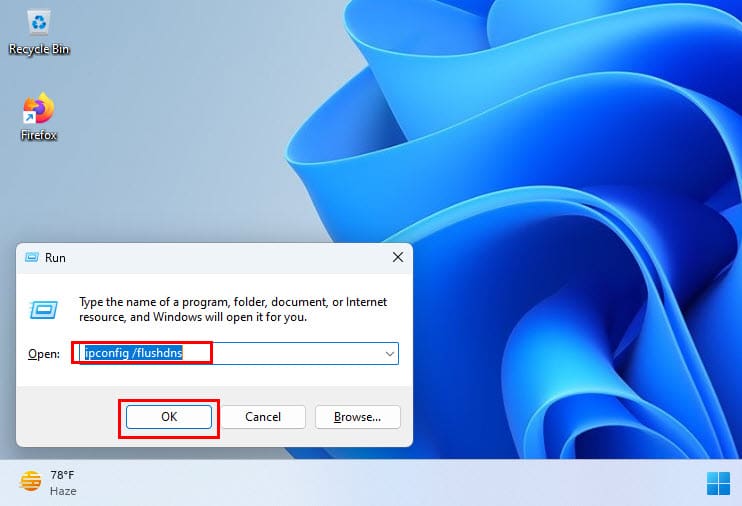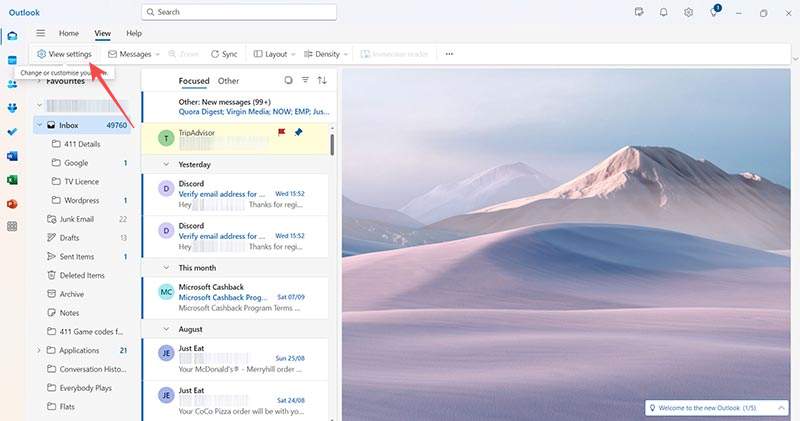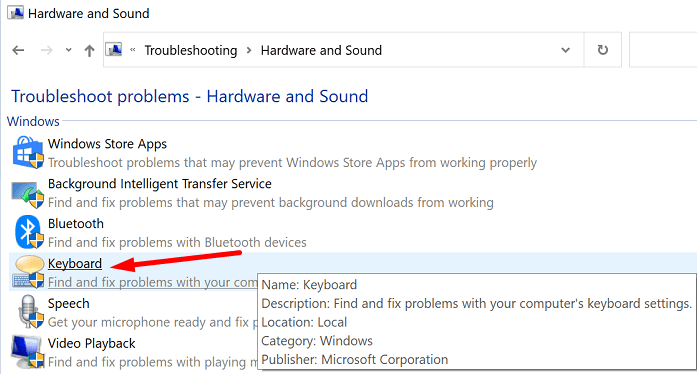Windows est un système d'exploitation complet qui vous permet de dicter et de gérer les autorisations d'accès en fonction du compte actuellement actif. Cela permet aux administrateurs de gérer plus facilement les PC de leur organisation en leur permettant de fournir des autorisations élevées à des personnes sélectionnées.
Mais que faire si vous possédez votre PC ? Comment gérez-vous les comptes locaux ? Et si vous n'avez pas de compte administrateur ? Êtes-vous en lock-out pour toujours? Si vous vous êtes posé ces questions ou si vous avez récemment rencontré une erreur nécessitant l'autorisation de l'administrateur, nous avons le guide parfait pour vous.
Voici tout ce que vous devez savoir sur les comptes d'administrateur dans Windows 11.
Remarque sur la compatibilité avec Windows 10 : les guides de cette page ont été compilés à l'aide de Windows 11, donc l'interface utilisateur utilisée dans les captures d'écran est celle de Windows 11. Mais ces guides fonctionnent également totalement sur Windows 10. Alors, n'hésitez pas à utiliser les guides sur Windows 11 ainsi que sur Windows 10 PC.
Connexe : Comment rechercher dans Windows 11
Contenu
Qu'est-ce qu'un compte administrateur dans Windows 11 ?
Un compte administrateur est le compte le plus élevé dans Microsoft Windows avec les privilèges les plus élevés. Cela vous permet en tant qu'administrateur de gérer votre PC comme vous le souhaitez. Vous pouvez apporter des modifications aux fichiers système, installer des programmes élevés, modifier votre installation Windows, configurer une automatisation personnalisée et bien plus encore. L'autorisation d'effectuer de telles tâches n'est pas disponible pour les utilisateurs standard ou invités. De plus, en tant qu'administrateur, vous pouvez gérer les fonctionnalités de Windows et dicter celles qui sont disponibles et accessibles à vos utilisateurs.
Pourquoi avez-vous besoin d'un compte administrateur ?
Un compte administrateur est un compte avec les privilèges les plus élevés dans Windows. Cela signifie que vous pouvez apporter des modifications au niveau du système à votre système d'exploitation à l'aide d'un compte administrateur sans aucune restriction. Voici quelques-unes des raisons courantes pour lesquelles vous pourriez avoir besoin d'un compte administrateur sur votre PC.
- Pour apporter des modifications au niveau du système à votre système
- Pour éditer/modifier ou réparer vos fichiers système
- Pour exécuter des commandes et des scripts de niveau administrateur
- Pour activer ou désactiver les fonctionnalités de Windows
- Pour installer des programmes et des réglages au niveau du système
- Pour modifier ou réinstaller vos pilotes
- Pour accéder aux paramètres de personnalisation dans Windows
- Pour réinitialiser ou modifier les mots de passe des comptes locaux
et beaucoup plus. Il peut y avoir de nombreuses raisons pour lesquelles vous avez besoin d'un compte administrateur dans Windows 11, mais saviez-vous qu'il existe deux types de comptes administrateur dans Windows. Eh bien pas exactement, mais voici tout ce que vous devez savoir à leur sujet.
Connexe : Comment désactiver les sons d'alerte de Windows 11
Connectez-vous en tant qu'administrateur : ce que vous devez savoir
Par défaut, Windows est livré avec un compte administrateur intégré même s'il n'est pas disponible sur votre écran de verrouillage. Ce compte par défaut est créé au moment de votre installation de Windows pour approuver toutes les modifications système apportées sur votre PC lors de la configuration de Windows.
De plus, Windows vous permet également de configurer un compte administrateur supplémentaire à partir de votre compte local si vous disposez des autorisations nécessaires. Vous pouvez également convertir votre compte actuel en compte administrateur si vous utilisez actuellement un compte standard dans Windows 11.
La configuration de chacun de ces comptes a des exigences différentes et en fonction de votre configuration actuelle, vous pouvez opter pour l'une ou l'autre des configurations. Mais si vous essayez de récupérer le mot de passe de votre compte local, l'utilisation du compte administrateur par défaut est votre meilleur choix, car vous ne pourrez pas dépasser l'écran de verrouillage dans ce cas.
De plus, voici quelques éléments courants que vous devez garder à l'esprit avant de poursuivre avec les guides ci-dessous.
- L'administrateur par défaut n'a pas de mot de passe de connexion à moins qu'il ne soit personnalisé par votre administrateur
- Si votre unité a été émise par votre organisation ou établissement d'enseignement, les méthodes ci-dessous ne fonctionneront probablement pas pour vous. Le compte administrateur par défaut sera verrouillé par votre organisation et votre compte actuel n'aura pas les privilèges nécessaires pour continuer avec les autres méthodes de ce guide. Vous devrez probablement contacter votre administrateur si vous possédez une telle unité.
- Si vous partagez l'appareil avec d'autres utilisateurs, vous devez désactiver le compte administrateur une fois que vous avez apporté les modifications nécessaires à votre système pour éviter tout accès non autorisé à des informations sensibles. Il est également recommandé de définir un mot de passe pour votre compte administrateur par défaut dans de tels cas.
- Certaines méthodes ci-dessous nécessitent que vous ayez Windows 11 Pro ou supérieur installé sur votre système. Si vous utilisez l'édition familiale de Windows 11, vos options seront limitées.
Différence entre le compte administrateur par défaut et donner un accès administrateur à un compte utilisateur
Le compte administrateur par défaut est un compte distinct qui se trouve dans chaque installation de Windows, quel que soit votre appareil ou la version de Windows. Un compte converti, en revanche, est un compte standard ou invité sur votre PC qui a été élevé aux privilèges d'administrateur.
Une fois élevé, votre compte appartiendra au groupe Administrateur et vous disposerez de toutes les autorisations d'administrateur nécessaires pour apporter des modifications au niveau du système sur votre PC. L'administrateur par défaut est principalement utilisé lorsque vous essayez de récupérer les mots de passe de compte perdus pour les comptes d'utilisateurs locaux sur votre PC.
D'un autre côté, la conversion d'un compte est un processus simple d'élévation des autorisations de votre compte actuel, ce qui vous permettra de fonctionner en tant qu'administrateur de l'appareil actuel. L'administrateur par défaut peut être désactivé sur votre système avec une simple commande, tandis que votre compte local devra être reconverti si vous souhaitez annuler les modifications. Utilisez l'une des méthodes ci-dessous qui correspond le mieux à vos besoins actuels.
Connexes : Comment désactiver le clavier sous Windows 11
Comment se connecter en tant qu'administrateur sous Windows 11
Vous pouvez vous connecter en tant qu'administrateur dans Windows 11 en utilisant les différentes méthodes que nous avons abordées ci-dessus. Vous pouvez soit activer le compte administrateur par défaut si vous souhaitez apporter des modifications temporaires sur votre PC, soit récupérer un mot de passe perdu. Vous pouvez également configurer un nouveau compte administrateur pour un nouvel utilisateur au cas où vous souhaiteriez partager votre appareil avec quelqu'un. Enfin, vous pouvez convertir votre compte local actuel en compte administrateur si vous cherchez vous-même à obtenir des privilèges d'administrateur sur l'appareil actuel. Suivez l'une des méthodes ci-dessous qui correspond le mieux à vos besoins et exigences actuels.
Méthode #01 : Utiliser le compte administrateur par défaut
Vous pouvez utiliser le compte administrateur par défaut sur votre PC Windows 11 pour apporter les modifications nécessaires à l'aide du guide ci-dessous. Une fois les modifications apportées, vous pouvez désactiver le compte à l'aide du guide suivant. Commençons.
1.1 Activer le compte administrateur par défaut
Nous devrons d'abord activer/afficher le compte administrateur sur votre PC. Cela peut être fait en utilisant diverses méthodes. Si vous pouvez passer l'écran de verrouillage, vous pouvez utiliser l'une ou l'autre de ces méthodes. Cependant, si vous ne parvenez pas à passer l'écran de verrouillage, vous devrez accéder au CMD à partir de votre écran de verrouillage et utiliser le guide ci-dessous. Dans de tels cas, vous pouvez utiliser le guide en bas pour activer CMD directement depuis votre écran d'accueil. Commençons.
1.1.1 Utilisation de CMD
Lancez CMD sur votre système et tapez la commande ci-dessous. Une fois terminé, appuyez sur Entrée sur votre clavier pour l'exécuter.
net user administrator /active:yes

La commande devrait maintenant être exécutée avec succès.

Appuyez sur la touche Windows de votre clavier et cliquez sur votre nom d'utilisateur dans le coin inférieur gauche. Un compte Administrateur devrait maintenant être visible dans cette section.

Cela signifie que le processus a été couronné de succès. Vous pouvez maintenant vous déconnecter de votre compte et vous connecter au compte administrateur. Le compte administrateur par défaut n'a pas de mot de passe et vous serez accueilli par l'OOBE une fois connecté au compte. Vous pouvez maintenant utiliser les guides suivants pour réinitialiser votre mot de passe Windows si nécessaire.
1.1.2 Utilisation des outils d'administration
Appuyez Windows + Rsur votre clavier pour lancer la boîte de dialogue d'exécution. Tapez le terme suivant une fois lancé et appuyez sur Entrée sur votre clavier.
lusrmgr.msc

Le gestionnaire de groupes locaux va maintenant être lancé sur votre PC. Commencez par sélectionner « Utilisateurs » sur votre gauche.
Cliquez sur Administrateur à votre droite. Maintenant, cliquez sur Plus d'actions puis sur Propriétés .

Une nouvelle fenêtre va maintenant s'ouvrir sur votre écran. Décochez l'option "Le compte est désactivé".

Cliquez sur 'Appliquer' puis sur 'OK'.

Fermez le gestionnaire de groupes locaux et activez le menu Démarrer. Cliquez maintenant sur votre nom d'utilisateur en bas à gauche et un nouveau compte « Administrateur » devrait maintenant être disponible dans cette section. Vous pouvez maintenant vous déconnecter de votre compte actuel et vous connecter au nouveau compte administrateur. Le compte n'aura pas de mot de passe et vous devriez pouvoir vous y connecter facilement en cliquant simplement sur « Connexion ».
1.1.3 Utilisation de l'éditeur de registre
La méthode de l'éditeur de registre s'applique uniquement aux utilisateurs avec Windows 11 Pro ou supérieur installé sur leurs systèmes. En effet, le chemin d'accès au registre auquel nous devons accéder pour cette méthode n'est disponible que pour les utilisateurs de Windows 11 Pro ou supérieur. Si vous êtes un utilisateur de Windows 11 Home, vous pouvez utiliser la méthode CMD répertoriée ci-dessus à la place.
Appuyez Windows + Rsur votre clavier et tapez le terme suivant. Appuyez sur Entrée sur votre clavier une fois que vous avez terminé.
regedit

Naviguez maintenant vers le chemin suivant. Vous pouvez également copier-coller la même chose dans votre barre d'adresse en haut.
Computer\HKEY_LOCAL_MACHINE\SOFTWARE\Microsoft\Windows NT\CurrentVersion\Winlogon\SpecialAccounts\UserList

Avec UserList sélectionné sur votre gauche, faites un clic droit sur une zone vide sur votre droite et sélectionnez 'Nouveau'.
Cliquez sur 'Valeur DWORD (32 bits)'.
Nommez la valeur « Administrateur » et appuyez sur Entrée sur votre clavier.
Once the value is added, close the Registry Editor and restart your PC for good measure. An administrator account should now be available in the bottom left corner of your screen when at the lock screen.
1.1.4 Using GPO
If you are using an enterprise machine then you can also use the Group Policy Editor to enable the default administrator account on your PC. However, this option will be unavailable to users with Windows 11 Home edition. Follow the guide below to get you started.
Press Windows + R, enter the following term and press Enter on your keyboard to open the Group Policy Editor on your PC.
gpedit.msc
Navigate to the following directory using the left sidebar.
Computer Configuration\Windows Settings\Security Settings\Local Policies\Security Options\

Now double click on the following value on your right: Accounts: Administrator account status

Select ‘Enabled’.

Click on ‘Apply’ and then on ‘OK’.

Close the GPO window now and press the Windows key on your keyboard to open the Start menu. Now click on your username in the bottom left corner of your screen and a new Administrator account should now be available to you.
1.2 Disable the default administrator account
Now that you are done with your administrative tasks, it is recommended that you disable your administrator account to prevent unauthorized access to your system. Use one of the methods below that best suits your current needs and requirements. Let’s get started.
1.2.1 Using CMD
Activate CMD on your PC depending on your current setup and type in the following command. Press Enter on your keyboard to execute it.
net user administrator /active:no

And that’s it! The default administrator account should now be disabled on your PC.
1.2.2 Using Admin Tools
Press Windows + R and enter the following term in the Run dialog box. Press Enter on your keyboard once you are done.
lusrmgr.msc

Select ‘Users’ from the left sidebar and click on ‘Administrator’ on your right.
Select the checkbox for ‘Account is disabled’ option.

Click Apply and then OK.

Close the admin tools window and the default administrator account should now be disabled on your PC.
1.2.3 Using Registry Editor
Press Windows + R, type in the following, and press Enter on your keyboard to open the Registry Editor on your PC.
regedit

Once the registry editor opens, navigate to the path given below.
Computer\HKEY_LOCAL_MACHINE\SOFTWARE\Microsoft\Windows NT\CurrentVersion\Winlogon\SpecialAccounts\UserList

Click on ‘Administrator’ on your right and hit Del on your keyboard.
Confirm your choice by clicking on ‘Yes’.
Restart your PC and the default admin account should no longer be available on your lock screen.
1.2.4 Using GPO
Press Windows + R and type in the following. Press Enter on your keyboard once you are done.
gpedit.msc
Now navigate to the following path.
Computer Configuration\Windows Settings\Security Settings\Local Policies\Security Options\

Now double click on the following value on your right: Accounts: Administrator account status

Select ‘Disabled’.

Click on ‘Apply’ and then on ‘OK’.

Close the GPO window.
The default administrator account will now be disabled on your PC via the Group Policy Editor in Windows 11.
1.3 Login as admin using command prompt (can’t get past the lock screen issue)
If you are locked out of Windows and would like to access the administrator account to reset your password then you will need to launch CMD from your lock screen first. You will need a recovery environment to proceed with this guide.
You will need to first access CMD using Windows installation media (a Windows bootable USB) for this guide and then follow the steps below. If using an installation media press Shift + F10 during the setup to launch CMD anywhere.
Follow the guide below to get you started once you have launched CMD as given above.
Once the command prompt launches, enter the following command and press Enter on your keyboard.
cd windows

You will now be taken to your default boot drive in CMD. Enter the following command and execute it by press Enter on your keyboard.
cd system32

You will now be in the System32 directory. Execute the command below to create a backup of utilman.exe.
copy utilman.exe utilman.exe.back

Execute the command below within CMD now.
copy cmd.exe cmd1.exe

Now let’s delete the default utilman.exe.
del utilman.exe

We will now rename CMD so that it can be accessed as utilman.exe.
rename cmd.exe utilman.exe

Once all the commands are executed successfully, close the command prompt by typing in the following command.
exit

Restart your PC and proceed to the Windows lock screen as you normally would. Click on the accessibility icon in the bottom right corner and you should now be able to access CMD on your lock screen. Follow the guide above to enable administrator account on your system. Once enabled, you can use the guide below to reset a local account’s password. Once you have reset your password it is highly recommended that you revert the changes we made to cmd.exe and utilman.exe earlier. Use the steps below to revert your changes.
Press Windows + S on your keyboard and search for CMD. Click on ‘Run as administrator’ once it shows up in your search results.

Now enter the following commands one by one and execute them to revert your changes. Make sure to execute each command one after the other without changing their order.


rename utilman.exe.back utilman.exe

CMD functionality should now be restored within Windows 11. You can check for the same by pressing Windows + R on your keyboard, typing in CMD, and hitting Enter on your keyboard. If CMD launches on your system then all the necessary changes have been reverted successfully.

However, if CMD does not launch, make sure that you executed each command successfully on your system by re-verifying each one in the list above.
And that’s it! You should now be able to access CMD from your lock screen.
1.4 Reset password for a local account
You can now reset your local account’s password with the default administrator account we just enabled. Follow the steps below to get you started.
Log in to the Windows administrator account and then press Windows + S on your keyboard. Search for Control Panel and click and launch the app once it shows up in your search results.

Click on ‘User Accounts’.

Click on ‘User Accounts’ again.

Click on ‘Manage another account’.

Click and select the account for which you wish to change the password.

Now click on ‘Change the password’.

Type in your new password and confirm the same in the respective text boxes

Set a password hint if needed.

Click on ‘Change password’ once you are done.

And that’s it! The password for the selected account should now be changed. You can now visit the lock screen and log into your local account using your new password. We recommend you revert any changes made at this point to maintain your security and privacy. You should revert any CMD changes made as well as disable the default administrator account on your system using the guides above.
Method #02: Create a new administrator account in Windows 11
If you wish to create a new administrator account in Windows 11, then you can follow the steps below. Please keep in mind that you will need administrator privileges to create a new administrator user account on your device. Follow the guide below to get you started.
Press Windows + i on your keyboard and select ‘Accounts’ from the left sidebar.

Click on ‘Family & other users’.

Click on ‘Add account’.

At this point, you can enter the Microsoft Account details of the new user and follow the on-screen steps to set up a new account. However, if you are looking to create a new local account then you can continue with the steps below.
Click on ‘I don’t have this person’s sign-in information’.

Click on ‘Add a user without a Microsoft account’.

Enter the name of the new user.

Now set a password and confirm the same.

Click on ‘Next’ once you are done.
 \
\
A new account will now be added to your PC. However, the newly added account is a standard account. Let’s convert it into an administrator account. Press Windows + S on your keyboard and search for Control Panel. Click and launch the app from your search results.

Click on ‘User Accounts’.

Click on ‘User Accounts’ again.

Click on ‘Manage another account’.

Now click and select the new account you just created.

Click on ‘Change the account type’.

Click and select ‘Administrator’.

Finally, click on ‘Change account type’.

And that’s it! You will now have created a new local administrator account on your device.
Method #03: Change a standard account to an administrator account
If you have a standard account then you can simply switch to an administrator account. If using the Windows Home edition then you can either use the Control Panel method or the ‘netplwiz’ method. On the other hand, Windows Pro and higher users can use either of the methods listed below. Let’s get started.
Note: If you are logged in as a standard user and would like to convert the same account to an administrator account then we recommend you use the netplwiz guide in the methods below.
3.1 Using Control Panel (Windows home)
Press Windows + S on your keyboard, search for Control Panel and launch the app once it shows up in your search results.

Click on ‘User Accounts’.

Click on ‘User Accounts’ again.

If you wish to change your own account’s type then click on ‘Change your account type’. If you wish to convert another local account then select ‘Manage another account’ and select the concerned account. Once selected, click on ‘Change account type’.

Select ‘Administrator’.

Click on ‘Change account type’.

And that’s it, the concerned account should now be an administrator account on your system.
3.2 Using netplwiz
You can also use netplwiz to your advantage and convert user accounts on your PC. Follow the guide below to get you started.
Press Windows + R on your keyboard to launch the run dialog box. Once launched, type in the following and press Enter on your keyboard.
netplwiz

Check the box for ‘Users must enter a user name and password to use this computer’ at the top.

Now click and select the user account you wish to convert from the list below.

Click on ‘Properties’.

Switch to the ‘Group Membership’ tab at the top.

Click and select ‘Administrator’.

Click on ‘Ok’ twice, once you are done.

If you converted the current local account that you are signed in with then you will be prompted to re-login to the account for the changes to take effect. Click on ‘Yes’ to confirm your choice.
You will now be taken to the lock screen. Login to the concerned account and you should now have administrator privileges within it.
3.3 Using Local groups manager (Windows Pro and higher)
Press Windows + R on your keyboard, type in the following, and press Enter on your keyboard.
lusrmgr.msc
The local groups manager should now launch on your PC. Click and open ‘Users’ on your left.
Now select the desired User account that you wish to convert from your right and double click on it.
Switch to the ‘Member of’ tab and select the ‘Administrator’ group.
Click on ‘Ok’ once you are done.
And that’s it! The selected account will now have elevated administrator privileges within Windows.
Can you set or reset a password when logged in as an administrator?
Yes, you can easily reset your password as an administrator in Windows 11. This can be done in multiple ways and you can reset the password for a standard account or an administrator account using this method. This can be quite useful if you have forgotten your password and would like to get back into your system without losing your data.
However, you should keep in mind that this can be used by anyone to change your password and get access to your system. Hence, it is recommended that you set a secure password for your default account whenever possible.
For now, you can use the guide below to reset a password in Windows 11 when logged in as an administrator.
How to reset the password once logged in as an administrator
Resetting your password is quite easy when you are logged in to Windows 11 as an administrator. The best way to do this is by using either the Control Panel or CMD. Use one of the guides below that best fits your current needs and requirements. Follow any one of the guides below to get you started.
1. Using Control Panel
Press Windows + S and search for Control Panel. Click and launch the app from your search results.

Click on ‘User Accounts’.

Now click on ‘User Accounts’ again.

Click on ‘Manage another account’.

Now click and select your local account for which you wish to reset your password.

Click on ‘Change the password’.

Add a new password for your local account and confirm the same in their respective text boxes.

Now add a password hint if required.

Click on ‘Change password’ once done.

And that’s it! The password for the selected account should now be changed based on your preferences.
2. Using CMD
You can also reset a local account’s password using CMD. Follow the guide below to get you started.
Press Windows + S on your keyboard and search for CMD. Click on ‘Run as administrator’ once the app shows up in your search result.
Type in the following and press Enter on your keyboard.
net user

You will get a list of all the accounts currently available on your PC. Make a note of the desired account’s username and then type in the command below. Replace ‘NAME’ with the name you noted down earlier and replace ‘PASSWORD’ with your new password. Once done, press Enter on your keyboard.
net user NAME PASSWORD

And that’s it! Once the command is executed, the password for the desired account should be automatically changed on your PC.
How to add a password for the administrator account
If you are looking to secure your PC further then it is recommended that you add a password for the default administrator account. This will ensure that no one aware of this trick can access your Windows account without your authorization. We can add a password for your default admin account in several ways but we recommend you do so either via the advanced menu or via the CMD method. Follow any one of the guides below to get you started.
1. Using Ctrl + Alt + Del
Log in to the default administrator account and press Ctrl + Alt + Del on your keyboard.
Now click and select ‘Change password’.
Enter a new password and confirm the same in their respective fields.
Add a password hint or security question depending on your preferences.
Click on ‘Ok’ once you are done.
And that’s it! Your default administrator account’s password should now be changed on your PC.
2. Using CMD
Log in to the default administrator account and press Windows + S on your keyboard. Search for CMD and click on ‘Run as administrator’ once the app shows up in your search results.

Now enter the following command. Replace ‘PASSWORD’ with a password of your desired choice.
net user Administrator PASSWORD

And that’s it! The new password should now be set for your default administrator account.
Should you keep the administrator account enabled?
No, it is not recommended to keep your default/super administrator account enabled. This account has higher and more elevated privileges when compared to a normal administrator account in Windows. This account is used by Windows to perform system-level tasks in the background as well hence it could cause several privacy issues on your system.
In case somebody can access this account, they would have access to your entire data and hardware. The user could then proceed to take control of your entire system or simply infect it with malware, adware, and in the worst cases, ransomware.
We hope you were able to easily log in as an administrator in Windows 11 using the guide above. If you face any issues or have any more questions for us, feel free to reach out to us using the comments section below.
Related:
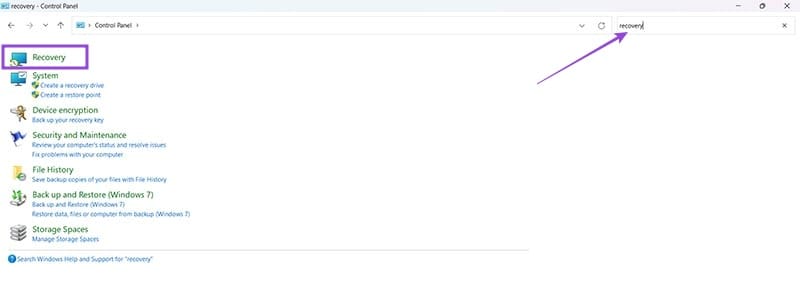















































 \
\



















